SLAMF7 defines subsets of human effector CD8 T cells
- PMID: 39730488
- PMCID: PMC11680708
- DOI: 10.1038/s41598-024-80971-5
SLAMF7 defines subsets of human effector CD8 T cells
Abstract
Long-term control of viral replication relies on the efficient differentiation of memory T cells into effector T cells during secondary immune responses. Recent findings have identified T cell precursors for both memory and exhausted T cells, suggesting the existence of progenitor-like effector T cells. These cells can persist without antigenic challenge but expand and acquire effector functions upon recall immune responses. In this study, we demonstrate that the combination of SLAMF7 with either CD27 or TCF-1 effectively identifies progenitor-like effector CD8 T cells, while SLAMF7 with GPR56 or TOX defines effector CD8 T cells. These markers allow for the clear segregation of these distinct cell subsets. SLAMF7+ CD8T cells are dynamically modulated during viral infections, including HIV, HCV, CMV, and SARS-CoV-2, as well as during aging. We further characterize the SLAMF7 signature at both phenotypic and transcriptional levels. Notably, during aging, the SLAMF7 pathway becomes dysregulated, resulting in persistent phosphorylation of STAT1. Additionally, SLAMF7 ligation in the presence of IL-15 induces TCF-1 expression, which promotes the homeostatic proliferation of progenitor-like effector CD8 T cells.
© 2024. The Author(s).
Conflict of interest statement
Declarations. Competing interests: The authors declare no competing interests.
Figures
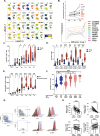
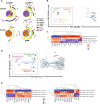
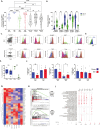
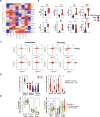
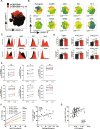
Similar articles
-
Signaling Lymphocytic Activation Molecule Family Member 7 Engagement Restores Defective Effector CD8+ T Cell Function in Systemic Lupus Erythematosus.Arthritis Rheumatol. 2017 May;69(5):1035-1044. doi: 10.1002/art.40038. Arthritis Rheumatol. 2017. PMID: 28076903 Free PMC article.
-
SLAMF7 (CD319) on activated CD8+ T cells transduces environmental cues to initiate cytotoxic effector cell responses.Cell Death Differ. 2025 Mar;32(3):561-572. doi: 10.1038/s41418-024-01399-y. Epub 2024 Oct 10. Cell Death Differ. 2025. PMID: 39390117 Free PMC article.
-
TOX is expressed by exhausted and polyfunctional human effector memory CD8+ T cells.Sci Immunol. 2020 Jul 3;5(49):eaba7918. doi: 10.1126/sciimmunol.aba7918. Sci Immunol. 2020. PMID: 32620560
-
Origin and fine-tuning of effector CD8 T cell subpopulations in chronic infection.Curr Opin Virol. 2021 Feb;46:27-35. doi: 10.1016/j.coviro.2020.10.003. Epub 2020 Nov 1. Curr Opin Virol. 2021. PMID: 33137688 Review.
-
The expansion and maintenance of antigen-selected CD8(+) T cell clones.Adv Immunol. 2007;96:103-39. doi: 10.1016/S0065-2776(07)96003-4. Adv Immunol. 2007. PMID: 17981205 Review.
Cited by
-
Different CMV-specific effector T cell subtypes are associated with age, CMV serostatus, and increased systolic blood pressure.Immun Ageing. 2025 Jul 3;22(1):27. doi: 10.1186/s12979-025-00523-x. Immun Ageing. 2025. PMID: 40611275 Free PMC article.
-
Rapid enrichment of progenitor exhausted neoantigen-specific CD8 T cells from peripheral blood.bioRxiv [Preprint]. 2025 May 15:2025.05.11.653315. doi: 10.1101/2025.05.11.653315. bioRxiv. 2025. PMID: 40462919 Free PMC article. Preprint.
References
-
- Brenchley, J. M. et al. Expression of CD57 defines replicative senescence and antigen-induced apoptotic death of CD8+ T cells. Blood101(7), 2711–2720 (2003). - PubMed
-
- Ouyang, Q. et al. Age-associated accumulation of CMV-specific CD8+ T cells expressing the inhibitory killer cell lectin-like receptor G1 (KLRG1). Exp. Gerontol.38(8), 911–920 (2003). - PubMed
-
- Voehringer, D. et al. Viral infections induce abundant numbers of senescent CD8 T cells. J. Immunol.167(9), 4838–4843 (2001). - PubMed
-
- Henson, S. M., Macaulay, R., Riddell, N. E., Nunn, C. J. & Akbar, A. N. Blockade of PD-1 or p38 MAP kinase signaling enhances senescent human CD8(+) T-cell proliferation by distinct pathways. Eur. J. Immunol.45(5), 1441–1451 (2015). - PubMed
MeSH terms
Substances
Grants and funding
- No. 10-036/Agency for Science, Technology and Research (A*STAR)
- BMRC IAF 311006, BMRC transition funds#H16/99/b0/011, BMRC IAF-PP H1901a0024/Agency for Science, Technology and Research (A*STAR)
- PI16/00684/Ministry of Economy and Competitiveness | Instituto de Salud Carlos III (Institute of Health Carlos III)
- PI9/01127/Ministry of Economy and Competitiveness | Instituto de Salud Carlos III (Institute of Health Carlos III)
- HIR/MOHE; H-20001-E000001/Ministry of Higher Education, Malaysia (MOHE)
LinkOut - more resources
Full Text Sources
Research Materials
Miscellaneous

